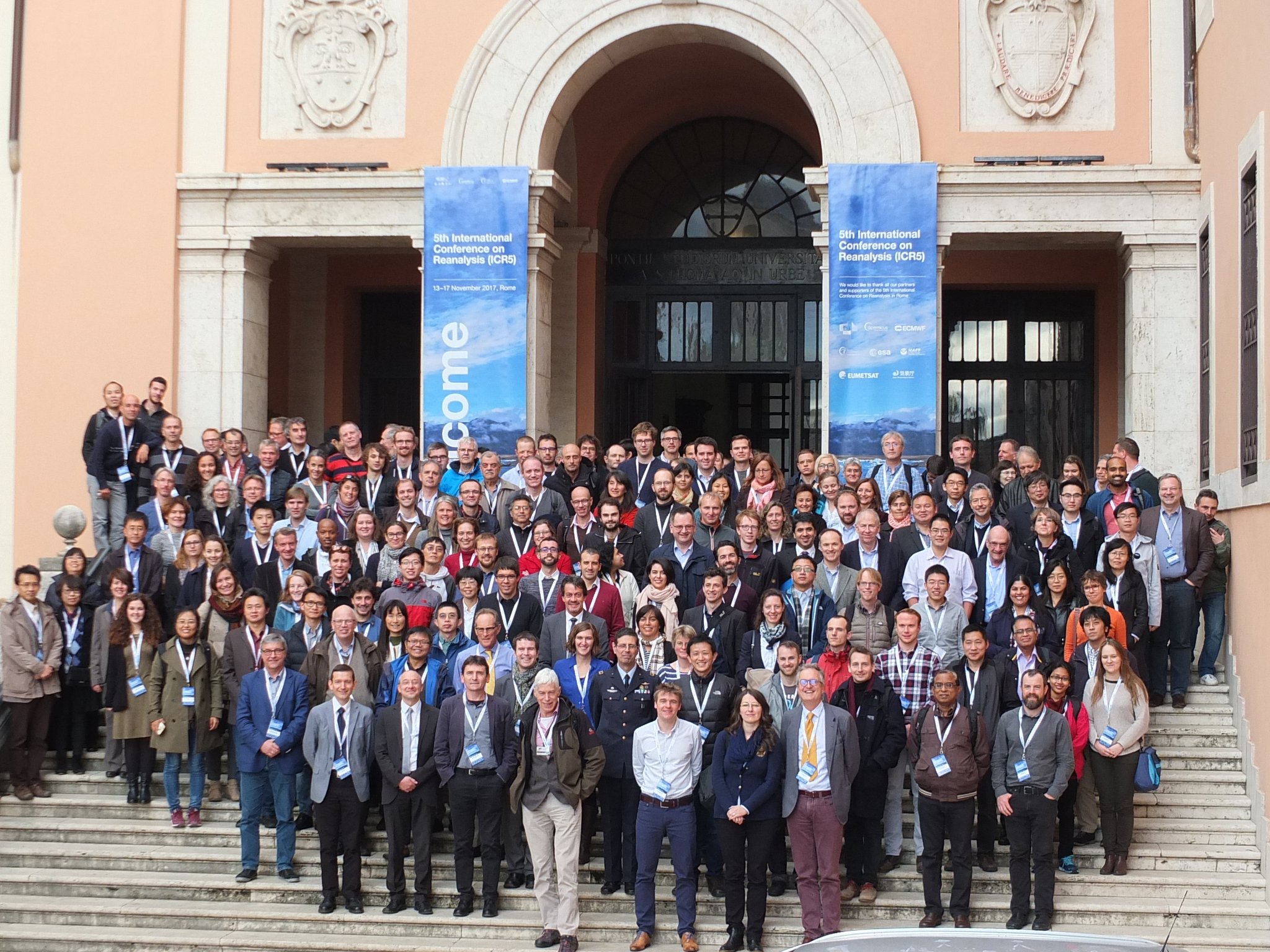 The 5th International Conference on Reanalysis (ICR5) was held in Rome from 13-17 November 2017, providing an important forum for exchange on five selected key themes in reanalysis. The conference was organized jointly by the EU Copernicus Climate Change Service (C3S) and the World Climate Research Programme (WCRP), with significant financial and in-kind support also provided by ECMWF, ESA, NOAA, EUMETSAT and JMA.
The 5th International Conference on Reanalysis (ICR5) was held in Rome from 13-17 November 2017, providing an important forum for exchange on five selected key themes in reanalysis. The conference was organized jointly by the EU Copernicus Climate Change Service (C3S) and the World Climate Research Programme (WCRP), with significant financial and in-kind support also provided by ECMWF, ESA, NOAA, EUMETSAT and JMA.
In a single-track format, 250 participants from 37 countries presented latest research on all aspects of reanalyses in 70 presentations and around 200 posters. The ICR5 conference also served to review progress in research, development, production and use of reanalyses since ICR4 held 2012 in Maryland, USA.
Reanalyses combine a wide range of observations with numerical models to give the best possible synthesized estimate of the Earth system state over time ranges of typically several decades. Reanalyses are crucial to many climate studies, applications as well as services and have an accordingly wide range of users in need of long-range (including climate) information, such as the scientific community, public organizations, the private sector and policy makers.
Reflecting this diversity, ICR5 was structured around five key themes:
- Status and plans for reanalysis production, including atmosphere, land, ocean and cryosphere
- Observations for reanalysis, including preparation, organization in large archives, data rescue, and reanalysis feedback
- Methods for reanalysis, including data assimilation, Earth-system coupling, uncertainty estimation, and challenges specific to regional reanalyses
- Evaluation of reanalyses, including comparisons with observations, other types of analysis and models, inter-comparisons, and diagnostics
- Applications of reanalyses, including generation of time-series of Essential Climate Variables for climate monitoring, climate services, and industry applications
The conference also discussed the merits of reanalyses to monitor climate variations, to support policy makers in the development of adaptation policies, and to provide complementary information to other sources of climate information. It included attendants from academia, governmental as well as intergovernmental institutions, NGOs and industry.
An online livestream of the conference allowed for remote viewing of all oral presentations as well as Tuesday’s panel discussion. Social media and email channels were monitored for remote questions and comments to the speakers. The conference organizers, session chairs, and early career rapporteurs are planning to publish ICR5 synthesized outcomes and recommendations in the peer-reviewed literature.
As one of WCRP’s unifying themes is capacity development for future science leaders, ICR5 included a track of activities for early career researchers, such as involvement in session reporting, a meet-and-greet with senior scientists and a social networking event. A special mention was awarded to the contribution of ICR5’s youngest attendant who, aged 16, presented a poster on a 2014 atmospheric river event and its climatological context.
For more details on the conference, see the ICR5 homepage.
Recordings from the ICR5 livestream are available on the Copernicus ECMWF's video channel. The speakers' presentations are likewise available for download from the ICR5 homepage, and poster files will be available soon.

